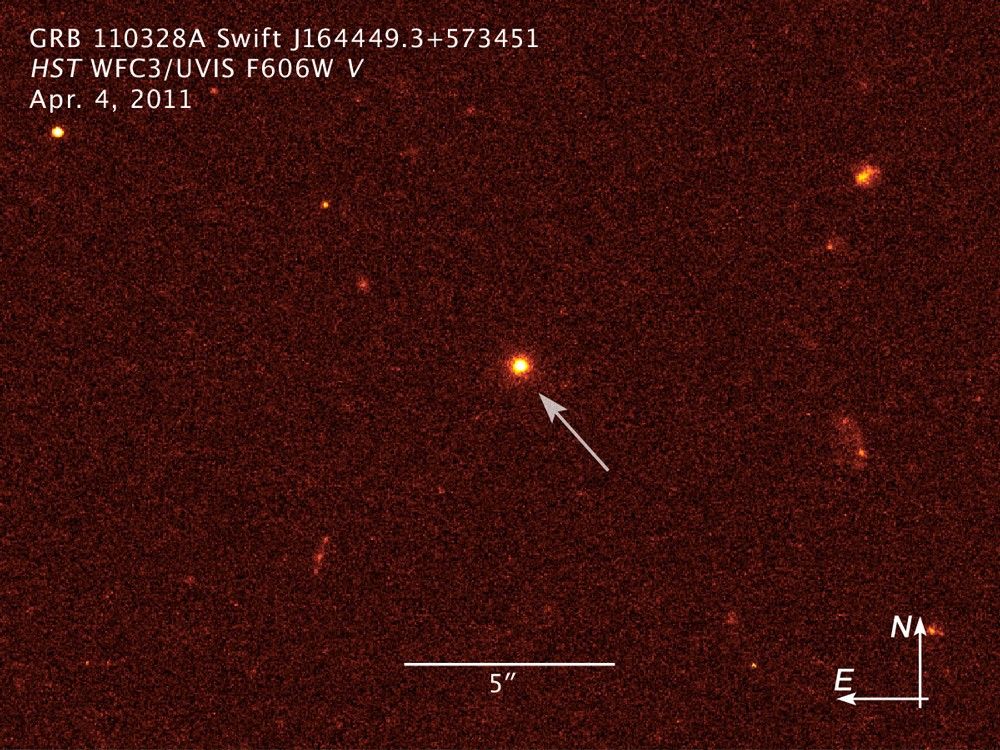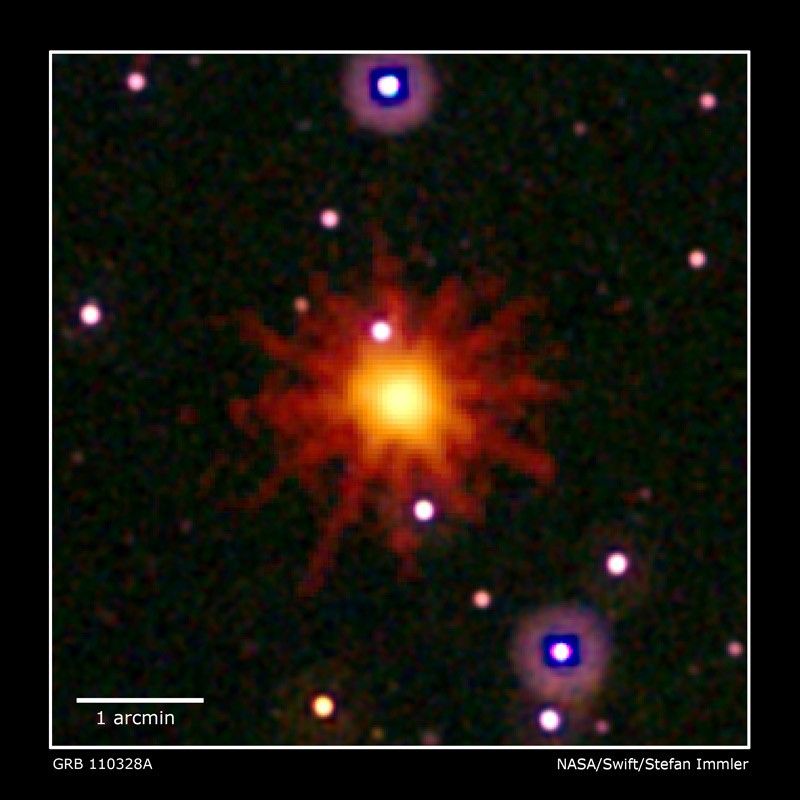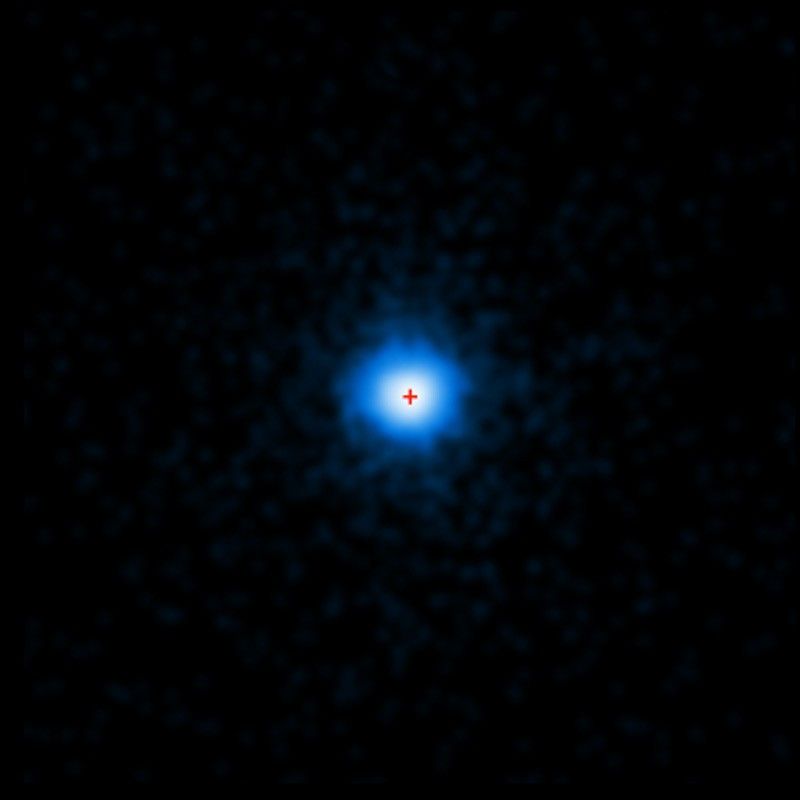1 min read
Hubble Pinpoints Source of Mysterious Outbursts
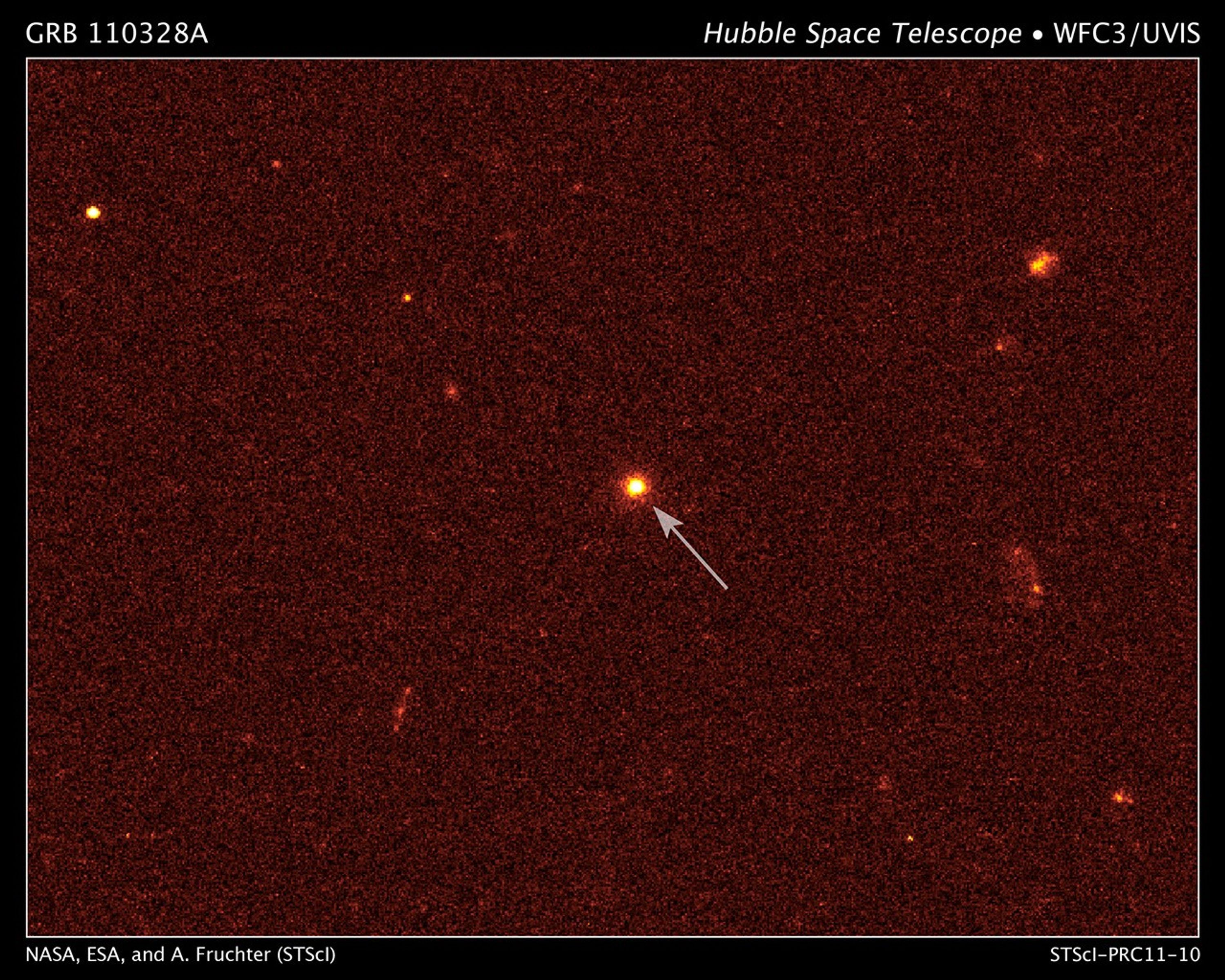
NASA's Hubble Space Telescope has pinpointed the source of one of the most puzzling blasts of high-energy radiation ever observed. It is at the very center of a small, distant galaxy, which appears to be sending a beam of radiation directly toward Earth.
The 3.8-billion-light-year-distant galaxy appears as a bright blob at the center of the Hubble picture.
This observation may support the idea that a supermassive black hole at the core of the galaxy has gravitationally torn apart and swallowed a bypassing star. As the star's gas falls onto the black hole, radiation is ejected along a narrow beam.
On March 28, 2011, NASA's Swift satellite, which looks for transient X-rays and gamma rays, detected the first of a string of powerful bursts of high-energy radiation that has lasted for a week.
More Hubble observations are planned to see if the core changes brightness. An armada of ground- and space-based telescopes is also watching the object from X-ray through radio wavelengths. The Hubble observations were taken in visible and near-infrared light on April 4, 2011, with the Wide Field Camera 3. This Hubble image was taken in visible light.
About the Object
- R.A. PositionR.A. PositionRight ascension – analogous to longitude – is one component of an object's position.16h 44m 49s.3
- Dec. PositionDec. PositionDeclination – analogous to latitude – is one component of an object's position.+57° 34' 51"
- ConstellationConstellationOne of 88 recognized regions of the celestial sphere in which the object appears.Draco
- DistanceDistanceThe physical distance from Earth to the astronomical object. Distances within our solar system are usually measured in Astronomical Units (AU). Distances between stars are usually measured in light-years. Interstellar distances can also be measured in parsecs.About 3.8 billion light-years or 920 megaparsecs (z=0.35)
- DimensionsDimensionsThe physical size of the object or the apparent angle it subtends on the sky.The image is 23.6 arcseconds wide.
About the Data
- Data DescriptionData DescriptionProposal: A description of the observations, their scientific justification, and the links to the data available in the science archive.
Science Team: The astronomers who planned the observations and analyzed the data. "PI" refers to the Principal Investigator.The image was created from Hubble data from proposal 12447: A. Fruchter (STScI), J. Bloom and S. Cenko (University of California, Berkeley), J. Graham (Johns Hopkins University), A. Levan (University of Warwick, UK), K. Misra (STScI), D. Perley (California Institute of Technology), and N. Tanvir and K. Wiersema (University of Leicester, UK). - InstrumentInstrumentThe science instrument used to produce the data.HST>WFC3/UVIS
- Exposure DatesExposure DatesThe date(s) that the telescope made its observations and the total exposure time.April 4, 2011, Exposure Time: 21 minutes
- FiltersFiltersThe camera filters that were used in the science observations.F606W (wide V)
- Object NameObject NameA name or catalog number that astronomers use to identify an astronomical object.GRB 110328A
- Object DescriptionObject DescriptionThe type of astronomical object.High-Energy Transient Event
- Release DateApril 7, 2011
- Science ReleaseNASA Telescopes Join Forces to Observe Unprecedented Explosion
- Credit

This image is a composite of separate exposures acquired by the WFC3/UVIS instrument on HST. A single filter (F606W) was used to sample a broad wavelength range. Color has been applied to represent brightness, mapping data values into a range of hues from black through red, orange and yellow, to white.

Related Images & Videos

Black Hole Eats Star (Annotated)
This diagram illustrates a possible explanation for a series of intense bursts of energy seen by the NASA Swift satellite's Burst Alert Telescope on March 28, 2011. Subsequent Hubble Space Telescope observations showed that the blasts originated from the center of a dwarf...
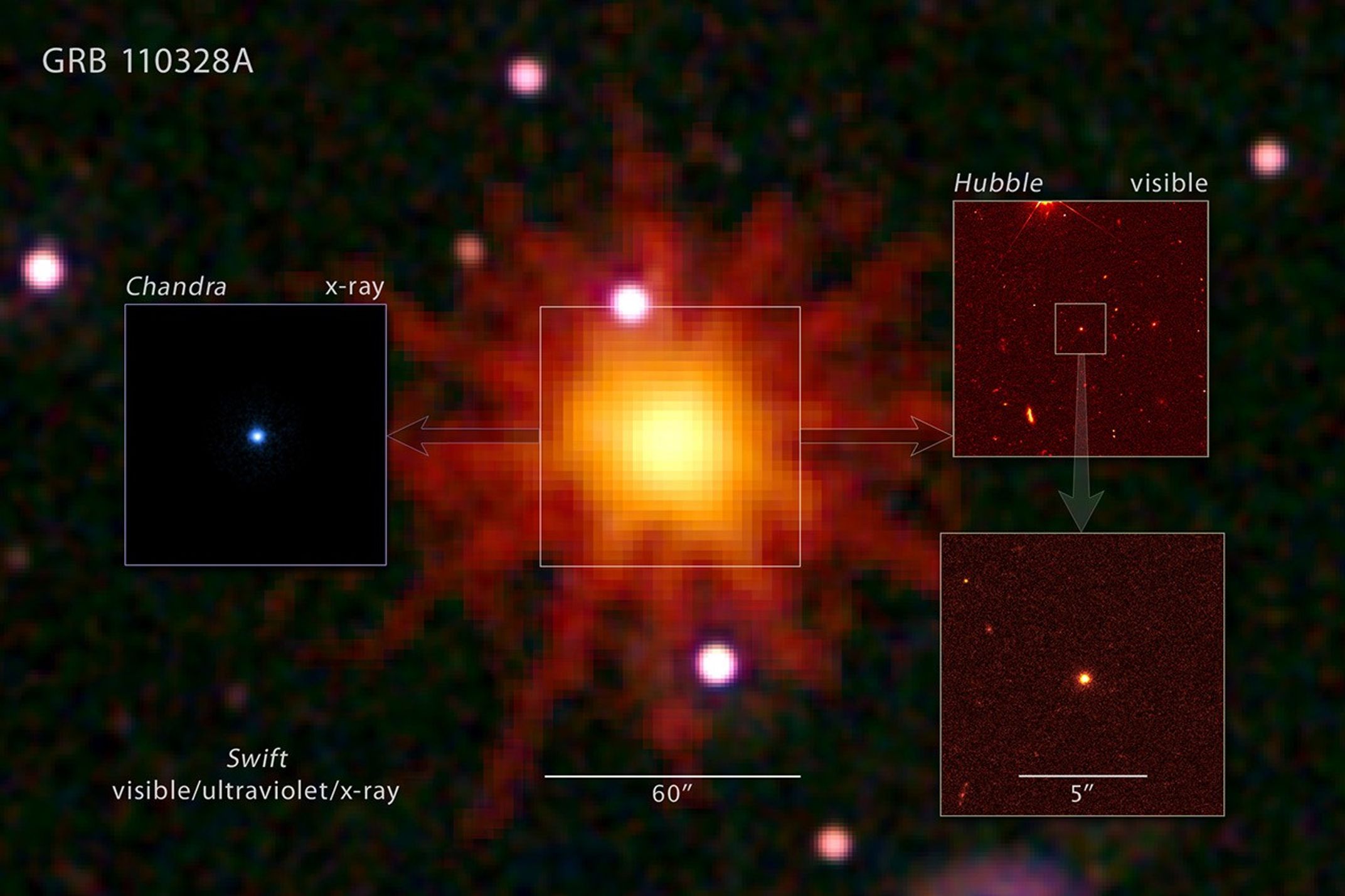
NASA Telescopes Join Forces to Observe Unprecedented String of High-energy Outbursts
This mosaic image illustrates how NASA's Swift satellite, Hubble Space Telescope, and Chandra X-ray Observatory teamed up to study one of the most puzzling series of cosmic blasts ever observed. On March 28, 2011, Swift's Burst Alert Telescope discovered the source of rapid...
Share
Details
Claire Andreoli
NASA’s Goddard Space Flight Center
Greenbelt, Maryland
claire.andreoli@nasa.gov


























